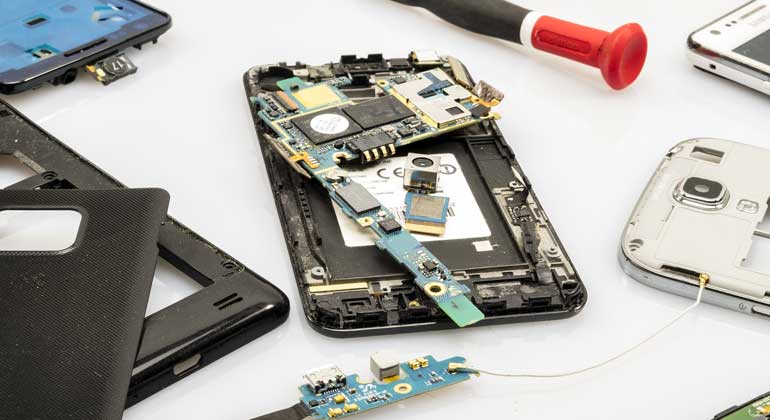How discarded smartphones can help decarbonize the building sector
Automated building systems offer a great potential for reducing the energy consumption of properties. Studies on such systems show that optimized solutions can reduce the energy requirements of buildings by around 30 percent on average. In order to avoid the necessity to produce new and emission-heavy computer chips, Empa researcher Hanmin Cai is currently investigating the extent to which damaged smartphones that are no longer used could perform these control and maintenance tasks.
Digitalization is increasingly finding its way into almost every area of our lives. Following the revolution in communication, the transformation of industry and the imminent turnaround in the mobility sector, there has also been an increasing focus on the building stock in recent years. And with good reason, as it is responsible for around 40 percent of Switzerland’s energy consumption. Self-learning algorithms that can optimize the operation of buildings based on their structural characteristics and usage are set to change this. Take, for instance, the solution of viboo, a startup that emerged from a research project at Empa: Their smart control system achieves energy savings of around 30 percent through automated heating and cooling alone. (See: NEST-Podcast Episode 40: How a smart algorithm can save you a lot of energy)
However, these building systems in turn require corresponding hardware – primarily computing power and communication channels. This circumstance got Hanmin Cai, a researcher at Empa in the field of urban energy systems, thinking about an entirely new approach. His current research focuses on automated building systems, and he thus is facing a similar dilemma concerning computing power, as he explains: “These systems are primarily designed to reduce energy consumption and CO2 emissions. But if we have to manufacture new hardware from valuable resources that causes itself large amounts of carbon emissions, just to operate those systems, then this is contradictory to their original purpose.” So he thought about his old smartphones, which he hadn’t have the heart to dispose of, and quickly realized that they carried an unutilized potential: Often times, they are replaced because of a damaged screen or receding battery capacity, while the computing power still works perfectly fine. To prove his point, he ran the algorithm, which he co-developed, over his old smartphone using open-source software applications. In a first test, he had this smartphone controller regulate the room temperature of a room at NEST within a comfort zone he had previously defined. In a second experiment, he let the algorithm control charging and discharging of an electrical battery in conjunction with a simulated power grid.
The initial results are satisfactory in that both tasks could be carried out with reasonable accuracy. In terms of communication speed, the smartphone controller was also within a range that is sufficient for building control. The obvious advantage of this setup, according to Cai: “We all buy a new smartphone every five years or so. What’s more, most households have more than one person living in them. So there would be plenty of resources available.”
Nevertheless, the project is still in a very early stage. Important matters, such as standardization and security of the software chain, are still unresolved. Prior to a longer-term study on their longevity, Cai and his team additionally need to perform a proper analysis on the life cycle emissions of such a smartphone controller. This will enable them to put a number on the amount of emissions saved, compared to a newly manufactured control unit.








